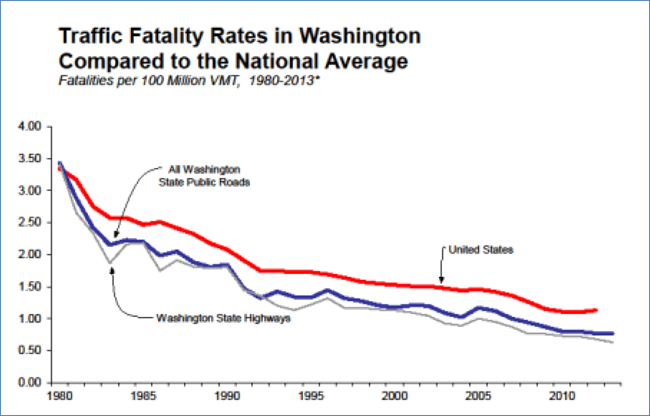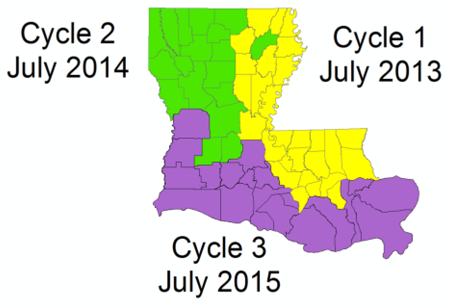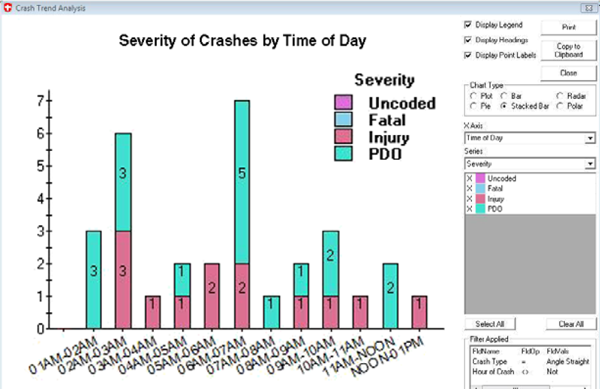Background
This case study, available as part of the Federal Highway Administration's (FHWA) Integration of State and Local Safety Data project, describes Tennessee's efforts to integrate local roadway data into their State data system.
This case study is part of a series of four. Each case study will identify a State's experience collecting local data, the challenges and obstacles faced and how they were overcome, benefits of the practices, reasons for success, lessons learned, and applicability of the practices to other agencies.
Historically, the majority of Tennessee's fatal and incapacitating crashes occurred on local/rural roads; however, local agencies within Tennessee collected very little roadway inventory data and the data collected was largely unavailable to the State. In 2007, the Tennessee Department of Transportation (TDOT) hired a contractor to collect location description and inventory data on all local roads and integrate the information into the Tennessee Roadway Information Management System (TRIMS) database that had been in place for State roads since the 1970s. TDOT's contractor collected data over a five-year period and met TDOT's rigorous data quality standards.
TRIMS is a single integrated linear referencing system database for State and local roadway structures, pavement, traffic, photo log, and crash data. In 2007, TDOT began developing eTRIMS, a map-centric, web-based version of TRIMS with the purpose of encouraging wider use of the TRIMS database. Additionally, the online application supports easier maintenance as users no longer need to install the TRIMS software locally in order to use the system. While TDOT expects that eTRIMS will eventually replace TRIMS, TDOT, local agencies and contractors in all 95 counties in Tennessee have access to both systems.
Key Accomplishments:
The following are key accomplishments of the Tennessee Roadway Information Management System:
- Improved data accuracy (for both roadway and crash data).
- One-stop access to all safety information.
- Data analytic support for State and local agencies.
- Support for project selection and funding justification.
Results:
Local agencies, by working with the State, use TRIMS/eTRIMS to identify safety needs, select projects, and obtain funding from the State to address safety issues. The integrated system also helps resolve crash data quality issues related to location coding accuracy, completeness, and timeliness.
TDOT is developing a long-term data maintenance method. They have not yet established procedures, but plan to include local agencies in reporting roadway updates in accordance with TDOT's data quality requirements. For now, the State will update data using an overlay on aerial photography as a way to identify major changes.
Contacts
Brian Hurst
Safety Manager
Project Safety Office
Tennessee Department of Transportation
615-253-2433
Brian.Hurst@tn.gov
Jeff Murphy
Information Systems Manager
GIS Mapping & Facilities Data Office TRIMS/E-TRIMS
Tennessee Department of Transportation
615-741-3429
Jeff.Murphy@tn.gov
Bryan Semore
Information Resource Specialist
GIS Mapping & Facilities Data Office TRIMS/E-TRIMS
Tennessee Department of Transportation
202-366-8090
Bryan.Semore@tn.gov
Tom Eldridge
Software Consultant
Intergraph Corporation
Tennessee Department of Transportation
Federal Highway Administration
202-366-8090
Tom.Eldridge@tn.gov
Stuart Thompson
Federal Highway Administration
202-366-8090
Stuart.Thompson@dot.gov



